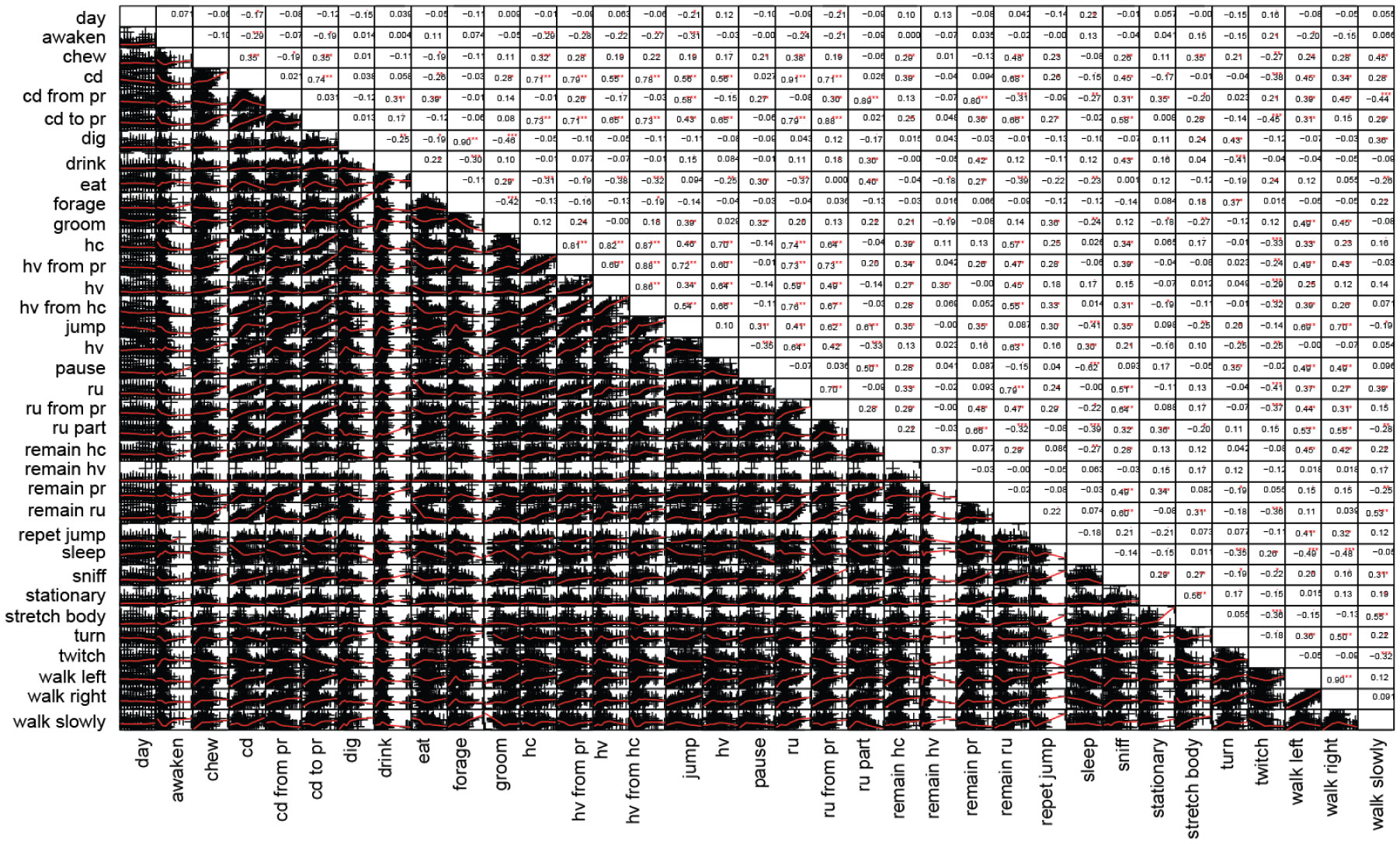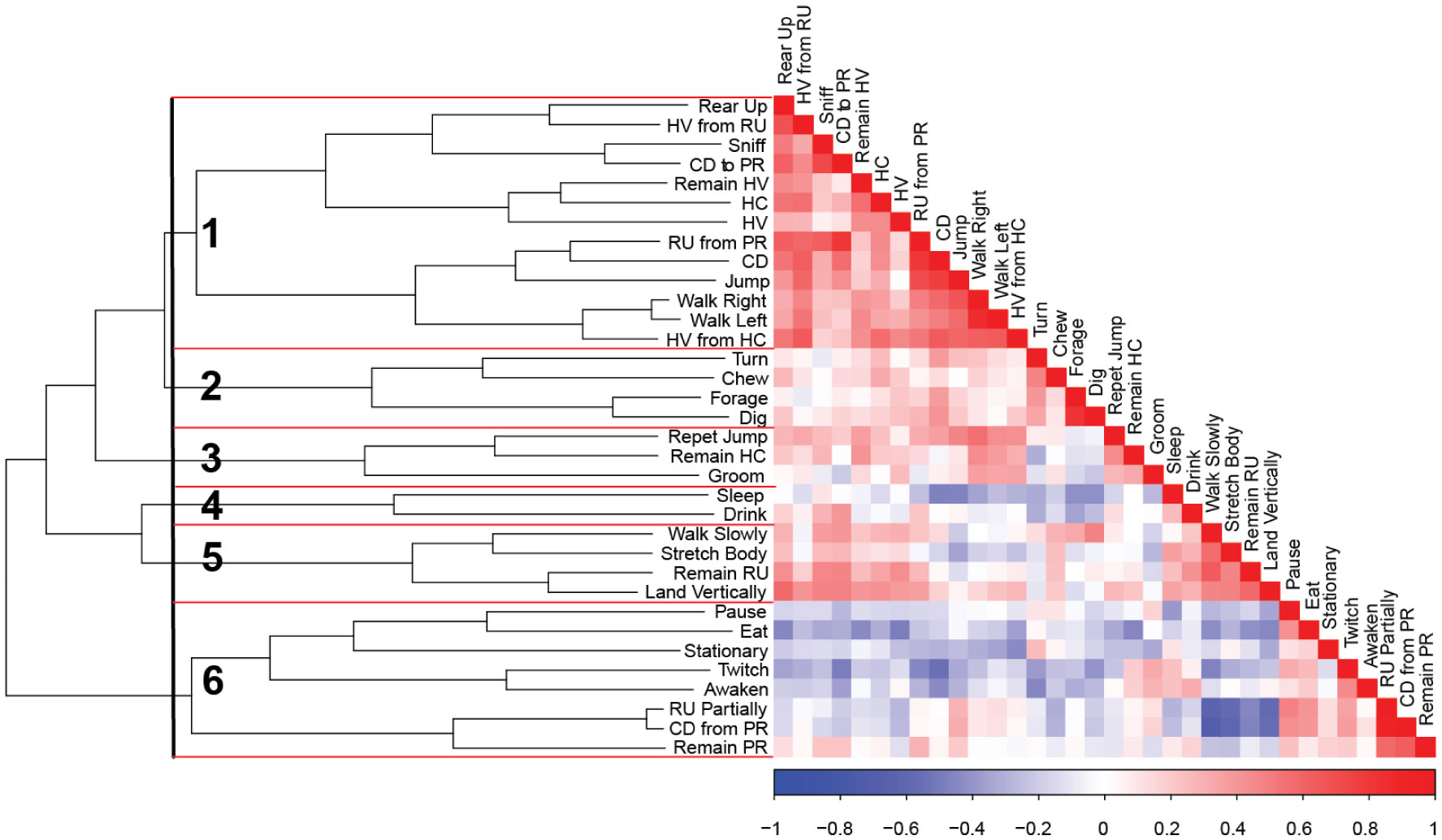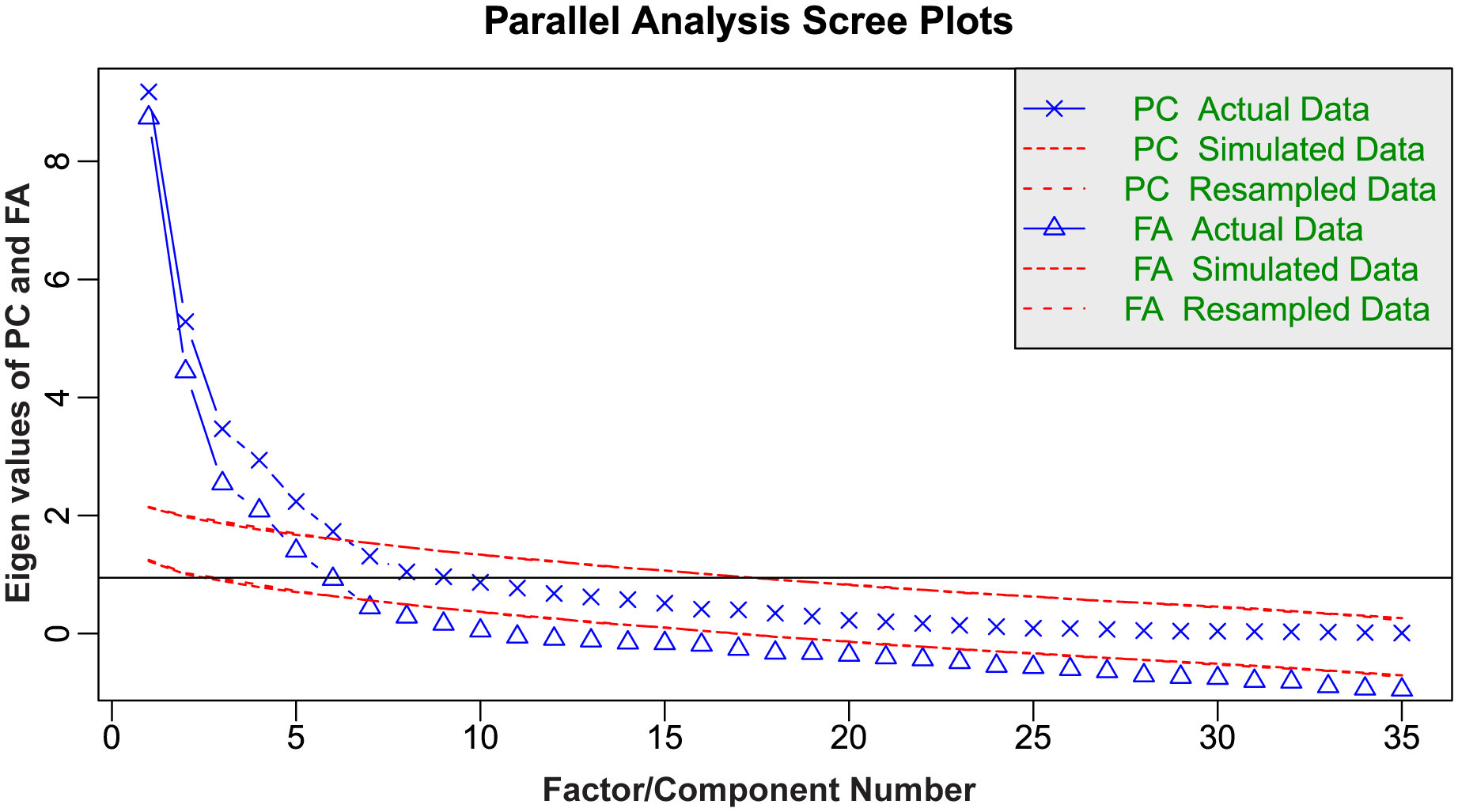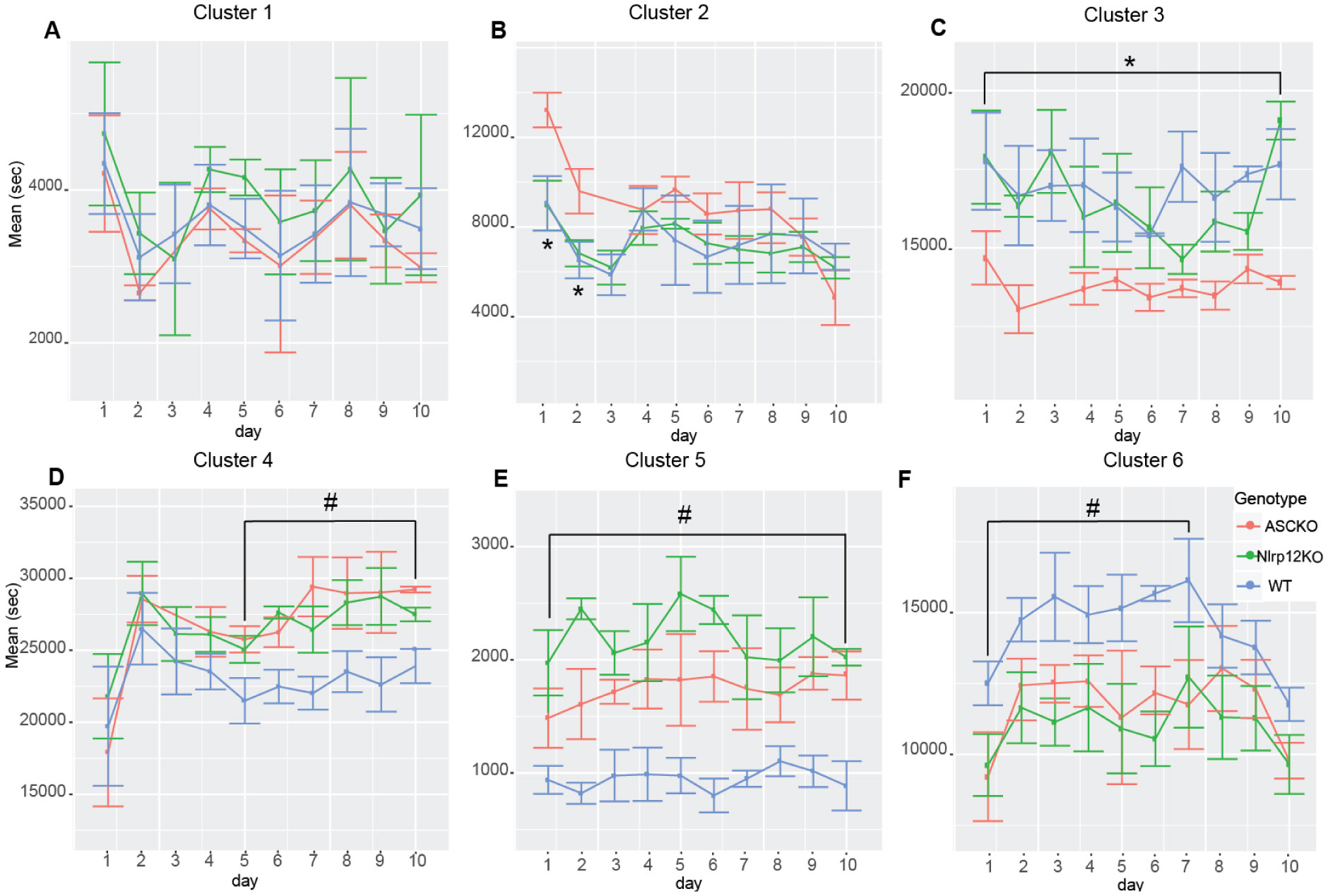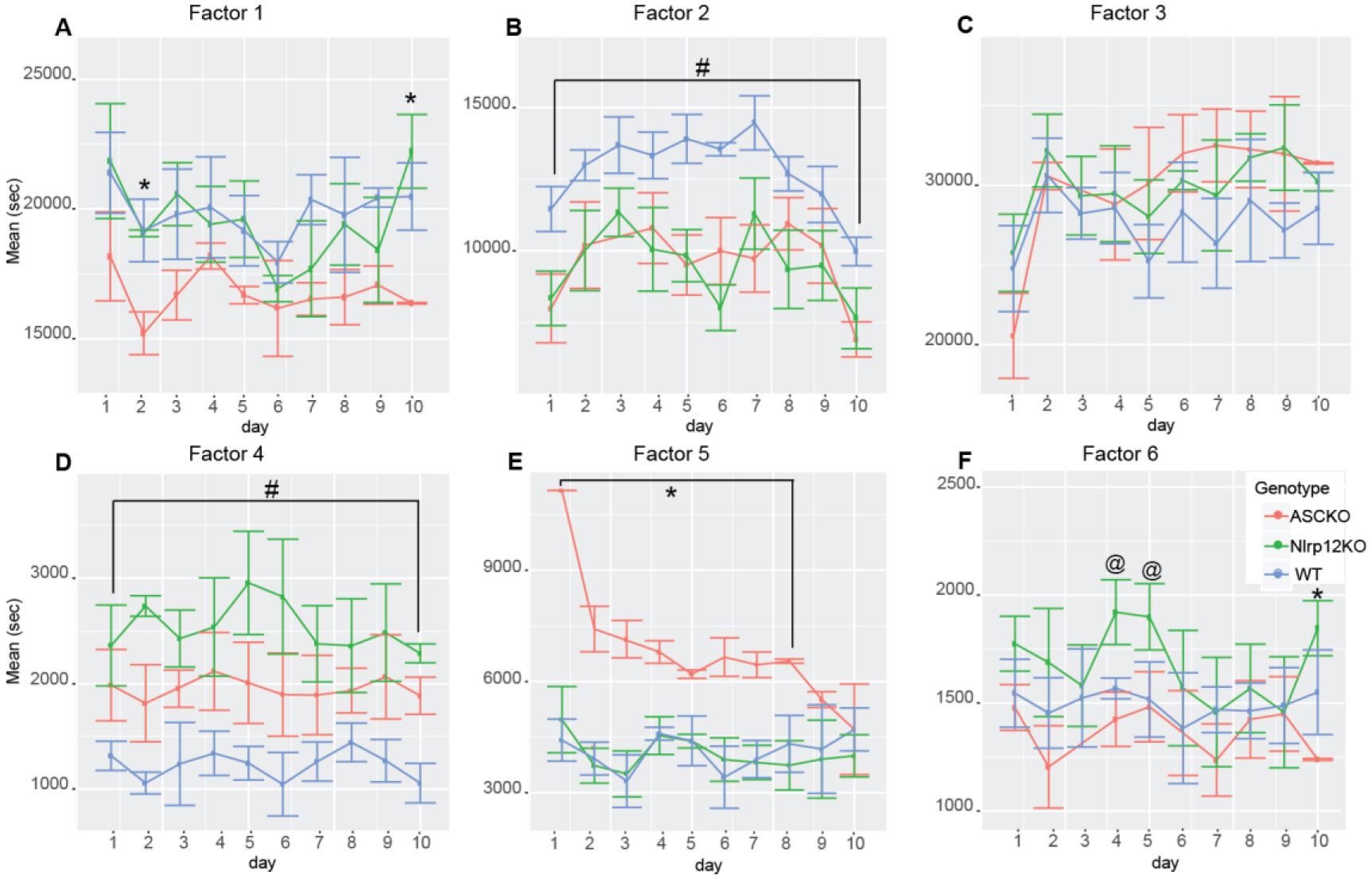1. Introduction
Large body of evidence that accumulated over the last century suggests strong effect of the immune system on the behavioral outcome. Most of the observations were made studying sickness behavior. For example, bacterial infection or exposure to bacterial products such as lipopolysaccharides (LPS) result in loss of appetite, social withdrawal, decreased locomotion, etc. [1,2]. Similar effects are observed after viral infection or interferon beta treatment [3,4]. Drastic changes in behavior are among main side effects of interferon treatment for multiple sclerosis (MS). In MS studies, researchers use strong immunological activation that induces the expression and release of high concentration of potent proinflammatory molecules such as interleukin 1 beta (IL-1β), tumor necrosis factor alpha (TNFα), prostaglandins, etc. [2]. We hypothesized that even small deviation in composition of immune system brings about changes in central nervous system function resulting in behavioral changes. With recent technological advances in detection of multiple various behavioral characteristics provides an ideal opportunity to study how subtle changes in immune system may bring about changes in behavioral profile.
In this study, we chose to investigate basal home cage behavioral profile of mouse genetic strains with positive and negative deviations of inflammatory homeostasis. First, apoptosis-associated speck-like protein knock-out mouse strain (ASC KO) is lacking a key adapter molecule in the assembly of inflammasome [5]. As a consequence, these mice have diminished levels of IL-1β and IL-18, which are the major proinflammatory cytokines. These mice are resistant to several autoimmune diseases and have deficiency in responding to several pathogens. Visually these mice do not differ from wild-type (WT) controls. The only difference that was reported in the context of ASC KO mice is that these mice, with age, gain more weight compared to WT [5].
Second, Nlrp12 KO mice are lacking a molecule that inhibits nuclear factor kappa B (NFκB), a major proinflammatory transcription factor that promotes the expression of proinflammatory cytokines such as IL-1β, TNFα, prostaglandins, etc. [6]. NOD-like receptors (Nlrs) are among the main regulatory proteins of the immune system [7]. The Nlr family of proteins comprises 23 members in humans and 34 in mice and can regulate both the innate and adaptive immune systems. Upon pathogen recognition, these proteins can activate multiple proinflammatory molecular pathways, including formation of the inflammasome and NFκB and mitogen-activated protein (MAP) kinase pathways. Nlrs have been implicated in the development of autoimmune disorders; however, their function in neuroinflammation and behavior is poorly understood. The recently discovered gene, Nlrp12 is thought to play a major role in host immunity by suppressing NFκB activity in microglial activation and dendritic cell migration [8,9]. Similar, to young ASC KO mice, these mice were not reported to have any obvious behavioral phenotypes.
Importantly, till today, the majority of behavioral observations are made based on a specific hypothesis. A specific experimental paradigm is designed based on a research question. Otherwise, behavioral observations are purely opportunistic, which means that the researchers that work with mice make occasional observations on the behavioral abnormalities that are striking and conspicuous. In our study, we used continuous 24-hour video recording which was analyzed by a computer supervised software (Clever Sys Inc. HomeCageScan). The resulting list of behavioral activities was analyzed using R statistical programming to systematically detect behavioral differences in the multi-parametric, exhaustive behavioral assay.
2. Results
2.1. Correlation matrix
After scaling data and removing activities that were present on the list of the output results but were not detected (value of zero) during our experiments, we acquired a behavioral array of 34 activities that were exhibited by a mouse (Table 1). The results are presented in a correlation matrix as a combined dataset, which contains data from recordings of all three mouse strains (Figure 1). Correlation matrix represents correlations between individual behavioral activities over 10 days. We observed 342 positive and 146 negative correlation in the combined dataset. Some activities change in a similar manner to each other and, therefore, may form groups of “similar activities”. The results above indicate that an exploratory data analysis is necessary due to the high number of statistically significant correlations. We used hierarchical clustering and factor analysis to understand how individual behavioral activities relate to each other.
Table 1. The list of the detected activities by the software, definitions of these activities, and their corresponding abbreviations.
| Activity |
Definition |
Abbreviation |
| Awaken |
Any movement from sleep that starts and continues without resumption of sleep |
awaken |
| Chew |
Any brief period during eating where the mouth detaches from the food |
chew |
| Come down |
Any movement of the animal from a fully reared position to a low position |
cd |
| Come down from partially reared |
Any movement of the animal from a partially reared up position to a low level |
cd from pr |
| Come down to partially reared |
Any movement of the animal from a fully reared up position to a partially reared up position |
cd to pr |
| Dig |
Any movement with animal's hind limbs inside bedding and resulting in a considerable movement of the bedding |
dig |
| Drink |
In a reared up position, animal's nose/mouth crosses water spout calibrated line |
drink |
| Eat |
In a reared up position, animal's nose/mouth crosses feeding box calibrated line |
eat |
| Forage |
Any movement with animal's forepaws and/or mouth inside bedding and resulting in a considerable movement of the bedding, typically in front of the animal |
forage |
| Groom |
Deformation of body over a defined criteria and longer than specified time |
groom |
| Hang cuddled |
Any movement of the animal resulting in animal having all four limbs at the top of the cage (more horizontal position at the top of the cage) |
hc |
| Hang vertically from hang cuddled |
Any movement from a hang cuddled position to a hang vertical position |
hv from hc |
| Hang vertically from rear up |
Any movement of the animal resulting in animal leaving the floor and not coming back down immediately and remaining vertical after leaving the floor |
hv from ru |
| Jump |
Any movement from a lower to a higher position and back to the lower position |
jump |
| Land vertically |
Any movement of the animal from a hanging position with feet off of the floor to the feet coming back down on to the floor |
land vert |
| Pause |
Implemented similar to sleep with those sleep constraints, but lasting only for much smaller prescribed minimum time |
pause |
| Rear up |
Any movement of the animal from a low position to a full reared up position |
ru |
| Rear up from partially reared |
Any movement of the animal from a partially reared position to a fully reared up position |
ru from pr |
| Rear up partially |
Any movement of the animal from low position to a partially reared position |
ru part |
| Remain hang cuddled |
After hanging cuddled, remain in a hanging cuddled position |
remain hc |
| Remain hang vertically |
After hanging vertically remain in a hanging vertical position |
remain hv |
| Remain partially reared |
Remain in a partially reared position |
reaming pr |
| Remain reared up |
After rearing up, remain in the reared up position |
remain ru |
| Repetative jumping |
Any series of successive jump behaviors |
repet jump |
| Sleep |
The onset of sleep is detected at each instance there is no significant movement for a prescribed amount of time |
sleep |
| Sniff |
When the animal is either fully or partially reared, and the tip of the mouth makes some random movements (back and forth, up/down, protrude/retract) |
sniff |
| Stationary |
Any sequence for which there is no translational movement |
stationary |
| Stretch body |
Any movement from shorter to longer/elongated body (horizontally or vertically) |
stretch body |
| Twitch |
Any movement of the animal from a side view to a front view or vice versa |
turn |
| Twitch |
Any brief movement of the animal during sleep |
twitch |
| Walk left |
Any movement of the animal in left direction over a given distance |
walk left |
| Walk right |
Any movement of the animal in right direction over a given distance |
walk right |
| Walk slowly |
Any sideways movement of animal without a definite direction component |
walk slowly |
2.2. Hierarchical clustering and dendrogram
Hierarchical clustering is a statistical approach that groups variables into clusters based on dissimilarities. To create a dendrogram, most similar clusters are grouped into new clusters of a new hierarchical order, continuing until only one cluster is left. Correlation matrix-based hierarchical clustering is one of the most widely used tools for exploratory data analysis of large datasets, such as genomic and proteomic analysis and imaging [10]. For this analysis, we used the combined dataset only (WT, ASCKO, and P12KO data) since it has the most variability. Hierarchical clustering matrix and the dendrogram of the combined dataset is presented in Figure 2. Hierarchical clustering matrix shows whether the correlation between behavioral activities is positive, negative, or neutral (represented by colour based on Pearson correlation). Drawing of vertical line across dendrogram defines the number and the content of the resulting clusters. For example, vertical line at level 1 would separate the 34 activities in two clusters. The vertical line at level 5 segregates data into 6 clusters that can be explained with our current knowledge of mice behavior. We can't explain the differences in clusters beyond this level.
In Figure 2, the first cluster consist of rearing up, hanging vertically from rearing up, sniffing, coming down from partially reared position, remaining hang vertically, hanging cuddled and vertically, rearing up from partially reared position, coming down, jumping, walking right and left, and hanging vertically from hanging cuddled activities. The second cluster consists of turning, chewing, foraging, and digging. The third cluster consists of repetitive jumping, remaining hang cuddled, and grooming. The fourth cluster consists of sleeping and drinking. The fifth cluster consists of walking slowly, stretching body, remining reared up, and landing vertically. The sixth cluster consists of pausing, eating, stationary, twitching, awakening, rearing up partially, coming down from partially reared position, and remaining partially reared. We will be using these clusters to assess the variation in behavioral arrays between wild-type, P12 knock-out, and ASC knock-out mice.
The variability in the data that resulted from the three experimental groups allowed us to explore the behavioral profiles of a healthy C57BL/6J, Nlrp12 knock-out, and ASC knock-out mice and divide the 34 activities into six clusters by their association to each other.
2.3. Factor analysis
Factor analysis allows to estimate the unobserved structure underlying the variations of observed variables and their interrelationships [11]. We performed factor analysis on the combined dataset to generate a model, which will be used to demonstrate the relationships between activities and the variations associated with the genotype. While drawing of a vertical line through the dendrogram of hierarchical clustering is based on our previous knowledge of mouse behavior, factor analysis separates the data based on statistical modeling.
To establish the number of factors, we used parallel analysis, which revealed that there are six factors and six components in the combined dataset (Figure 3). In addition, we ran the very simple structure (VSS) to verify the most appropriate number of factors, which confirmed that six factors would be the best model fit. With a loading cutoff of 0.4, we have generated six groups of activities (Figure 4). The values of the standardized value loadings range from λ = 0.874 to λ = 0.448; the mean lambda of absolute values for factor 1 is 0.637, factor 2 is 0.593, factor 3 is 0.633, factor 4 is 0.651, factor 5 is 0.811, and factor 6 is 0.661. Factor 5 is the most well-defined factor with lambda of 0.811 and factor 2 is the least well-defined factor with lambda of 0.593. Furthermore, there were no detected correlations between the latent constructs, which demonstrates that there is very little common variance between the defined factors. The model explains 65% of variance in the dataset. Most factors load uniquely onto one activity when a cutoff value of λ = 0.4 is used. Furthermore, negative factor loadings represent negative correlation between an activity as it relates to other activities in a group (red colored arrows in Figure 4).
2.4. WT vs. Nlrp12 KO vs. ASC KO by cluster
Figure 5 presents the full comparison by cluster of the three experimental groups: ASC KO, Nlrp12 KO, and WT mice. Cluster 1 that represents, by the most part, collection of physically demanding activities showed no significant differences between the genotypes. In cluster 2, ASC KO mice spent more time on days 1 and 2 turning, chewing, foraging, and digging compared to Nlrp12 KO and WT mice. In cluster 3 the main activity is grooming, which generally takes 20% of a 24-hour period in WT animals. ASC KO mice groom, remain hang cuddled, and repetitively jump significantly less compared to Nlrp12 KO and WT mice. Cluster 4 consists, sleeping and drinking, is performed for a significantly longer duration by ASC KO and Nlrp12 KO mice on days 5 to 10 compared to the WT controls. Cluster 5, walking slowly, stretching body, remaining reared up, and landing vertically, was performed for a significantly longer duration by ASC KO and Nlrp12 KO animals comparted to the WT controls. Cluster 6 activities were exhibited for a longer duration by the WT control animals compared to the ASC KO and Nlrp12 KO mice.
2.5. WT vs. Nlrp12 KO vs. ASC KO by factor
Figure 6 presents the comparison by factor of the three experimental groups. Activities in factor 1 that include variety of physically demanding activities and grooming were significantly higher on days 2 and 10 in WT and Nlrp12 KO mice compared to ASC KO with a similar general trend throughout the 10-day period. Activities in factor 2 that include activities that group around eating (eat, pause, rearing, remain stationary) that were significantly lower in ASC KO and Nlrp12 KO mice compared to WT controls. Factor 3 includes, by the large part sleep associated activities such as sleep, twitch, awaken, etc., has no significant differences between the groups. The inverse relationship is seen in factor 4 (walking slowly, stretching, chew, remain rear up) where ASC KO and Nlrp12 KO mice outperform WT controls. Foraging/exploratory activities in factor 5 exhibited by the ASC KO mice are significantly higher compared to Nlrp12 KO and WT mice on days 1 to 8. Activities in factor 6 include activities that associated with drinking behavior (drink, rear up, sniff, etc.) were significantly higher in Nlrp12 KO mice on days 4 and 5 compared to ASC KO and WT mice. On day 10, both WT and Nlrp12 KO had higher performance of these activities compared to ASC KO mice.
3. Discussion
Our study demonstrates that Nlrp12 KO and ASC KO mice have profound behavioral changes compared to WT control. These changes are not detectable by a naked eye but were revealed by the computer analysis and factor and hierarchical clustering analysis using R programming of 10 days of continuous video recordings.
Some changes in behavioral profile of ASC KO and Nlrp12 KO mice are consistent with their immune phenotype. Indeed, Nlrp12 KO and ASC KO mice spent an increased amount of time walking slowly, stretching body, remaining reared up, and chewing/landing vertically. Although, at this point, we cannot conclude that KO mice experience sickness behavior, from our unpublished observations, an increase in this array of activities is associated with sickness behavior. Similar observations were reported by another group [12].
Factor 2 and cluster 6 contain activities associated with eating, including pausing, rearing up partially, coming down from partially rearing, eating, stationary, remaining partially reared (factor 2) and the additional activities in cluster 6, including twitching and awaking. We observed that Nlrp12 KO and ASC KO spent less time on these activities compared to the WT controls. One of the sickness behavior characteristics is the tendency the eat less [1].
Digging and foraging activities are the activities performed to explore the home cage environment. ASC KO mice spent significantly more time exploring compared to the Nlrp12 KO and WT counterparts on days 1 to 8. Similarly, in cluster 2 (turn, chew, forage, and dig) there was an increase in these activities on days 1 and 2. We have not found any previous studies in the literature assessing exploration activities in the ASC KO animals. Sleeping and drinking activities were performed for longer length of time by ASC KO and Nlrp12 KO animals from day 5 to 10. Increased time spent sleeping was also linked to sickness behavior [1].
Human studies suggest that NLRP12 may play a proinflammatory role by contributing to the activation of inflammasome. This evidence comes from a cohort of Mediterranean families with mutation in NLRP12 that results in inflammatory skin lesions similar to patients with mutation in NLRP3, a well know activator of inflammasome [13]. In mice, Nlrp12 was shown to activate inflammasome only in the context of infection by yersina pestis, an inducer of plague [14]. A similar gene to ASC, Aim2, is inflammasome-activating, proinflammatory gene, was shown to regulate axonal growth and to shape hippocampal neurons in IL-1 beta-dependent manner. A series of short-term behavioral testing revealed a deficit in audition-triggers freezing and lower locomotor activity in Aim2 KO mice [15].
Our study suggests that the behavioral effects of Nlrp12 are, in many instances, similar to that of ASC. This is not surprising since As ASC Nlrp12 plays role in inflammasome activation. At the same time, Nlrp12 exerts strong anti-inflammatory effect by supressing NFkB pathway.
4. Summary and perspective
Here we report that video recording analysis used along side factor and cluster analysis provide a sensitive method to distinguish subtle changes in behavioral traits in mice that have mutation of immune genes but are otherwise normal. Unlike acute inflammation that is associated with infection, chronic inflammation is by far more subtle. Nevertheless, far reaching consequences of chronic inflammation are no less, if not more devastating than acute one. For example, cancer, type II diabetes, cardiovascular diseases, Alzheimer's disease, and many other diseases have strong inflammatory components. Therefore, novel means to detect slowly developing basal inflammation may help improve early diagnosis and to develop better and more efficacious treatments. At this point, it is important to note that the exact mechanisms of the behavioral array changes observed in this study is not clear. Changes in behavior can't be attributed to a lack of expression of a single protein but rather to the consequences of gene deletion. Such consequences may include downstream effects and compensatory mechanisms to the gene deletion.
5. Materials and methods
5.1. Mice
All experiments were approved by the animal ethics committee of the University of Sherbrooke. Eight male C57Bl/6J mice (WT) were purchased from The Jackson Laboratory (Bar Harbor, ME). They were acclimatized for 4 weeks before the beginning of the experiments [16]. Eight Nlrp12 knock-out (Nlrp12 KO) and eight ASC knock-out (ASC KO) male mice were bred at the University of Sherbrooke Animal Facility. Before experimentation, all mice were housed in groups of four. Mice were maintained in a sterile environment with a photoperiod of 14 hours of light (lights on at 6 am) and 10 hours of dark (lights off at 8 pm). Animals used in the experiments were 11 weeks old at day 0, housed in standard plastic cages with water and food ad libitum. Mice were separated one mouse per cage for the video recording for a duration of 10 days.
5.2. Video recording set up
Video recording devices (Swann Pro Series HD 720P) were placed perpendicularly to the clear home cages. The cages were surrounded by three white walls to facilitate the detection of movements and to shut out any stimulus from the surroundings. Each mouse was housed individually and was visible to the camera at all times. The feeding area was located on the opposite side of the cage from the drinking spout to ensure the accuracy of detection of these activities. The cameras were connected to a Swann 8 Channel HD Digital Video Recorder. The videos were recorded in AVI format in 1-hour segments and converted to MP4 format using Any Video Converter version 6.0.7.0. After the conversion, the hour-long videos were combined into 24-hour segments from 13:00-13:00 using Avidemux 2.6 (32-bit). The resulting video was analyzed using the HomeCageScan (HCS) software from CleverSys Inc.
5.3. Accuracy of the software
The settings of the software were tested by comparing HCS results with the results of three independent observers using one-minute video segments at four different time points (2 in dark cycle; 2 in light cycle). The results from the manual detection were compared with the results from the HCS software and resulted in over 90% of concordance. Two new backgrounds for dark and light cycle were created for each 24-hour segment.
5.4. Data analysis
The HCS software analyzed the footage from the recordings. HCS is based on supervised learning [17]. Data of mice' activities were expressed as the percentage of time out of 24 hours. R programming was used for factor analysis, hierarchical clustering, parallel analysis, very simple structure (VSS), and the one- and two-way ANOVA tests to find correlations between behavioral activities and to uncover factor loadings, to cluster together activities based on their dissimilarity, to find significant differences between genotypes in the established factors and clusters. The p-value was set at 0.01 for all statistical tests.
5.5. R and statistical significance
Correlation matrix was generated based on Pearson parametric correlation test. Hierarchical clustering matrix was computed using Euclidian distance and complete linkage method, generating a dendrogram based on dissimilarities between clusters. For the factor analysis, we used ordinary least squares technique with varimax data rotation to define the factor loadings. Statistical testing for model fit for factor analysis was conducted using the root mean square of the residuals (RMSR) ≤ 0.07 and Tucker Lewis Index of factoring reliability (TLI) ≥ 0.95 [18]. Best model was selected using VSS with RMSR ≤ 0.07, TLI ≥ 0.95, and Bayesian Information Criterion (BIC). One-way ANOVA followed by Tukey Honest Significant Difference (HSD) was used for within cluster/factor comparisons throughout 10-day period. Two-way ANOVA by Tukey HSD was used for comparisons between clusters/factors. The following R packages were used for analysis, statistics, and figures: Xlsx, PerformanceAnalytics, dplyr, reshape2, ggplot2, Rmisc, devtools, corrplot, nFactorspsych [19], and GPArotation.









 DownLoad:
DownLoad: 